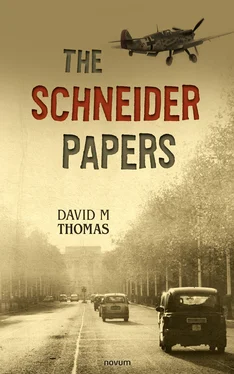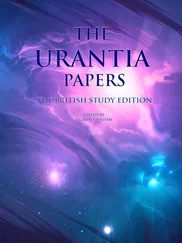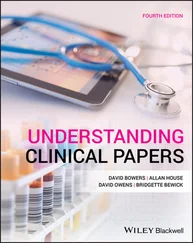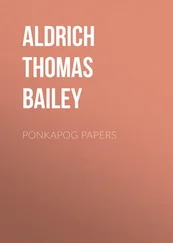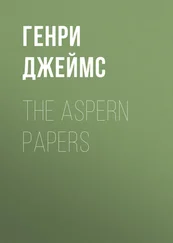‘If we could find out what German industry has, in terms of key matériel specific capacity and storage, and we focus on those industries and products in the light of this new Hitler directive, then we can work out when Germany would be confident enough to start and sustain a long war. M’sieurs-dames, we will now turn our full attention, I repeat, full attention, to imported oil and strategic minerals.
‘History repeats itself, remember the Schlieffen Plan and its consequences,’ he reminded his audience. ‘So, the first task is to review origin and import volumes of crude oil, refined products, lubricants and whatever else that makes an engine work, land, sea and air.’ Cartwright gave this project to Wheeler as leader and another six DCs to make up the German Fuel Assignment team. He reminded Arriola the Basque to get cracking on Spanish minerals. ‘Ongoing projects assessment at 15.00hrs.’ Cartwright clapped his hands and motioned dispersal. Someone shouted ‘Ole!’
On the way back to the greenhouse Cartwright called over Wheeler and, still walking, he said, counting fingers, ‘You and your team did the Synthetic Aviation Fuel study last month, lets now concentrate on conventional petroleum; one, import of oil and related products, from where, how much, current stockpile. What if we close off the shipping lanes and therefore introduce sustainability issues? Marry this with what you did last month. That’s it.’
Both knew this new study would produce guesstimates, to put it mildly and politely. But it had to be done. The effort had to be made.
***
Group Captain Thomas Langlois Lefoy RAF (ret’d) was the Assistant Air Attaché in Berlin. He and Cartwright had shared a hospital ward in 1917. Cartwright had fallen with a bullet in his shoulder and one in his leg, and Lefoy had fallen out of the sky in a shot-up Sopwith Camel. They were firm friends, even shared the same convalescent home in East Sussex. After the war, one went into the Foreign Office and the other stayed on in the rebranded Royal Air Force. Lefoy stayed until 1931; he landed up as station commander at RAF Middle Wallop Intermediate Pilot Training School, and thereafter took early retirement. He was transferred to the reserve auxiliary list, and was promptly contacted by his ex-bed-next-door companion, Major Alastair Cartwright MC.
Lefoy, as the IRS infiltrator, worked the embassy reception circuit in and around the Unter den Linden. Most of the embassies of worth were close by and so were the important German Ministries. Many a time he would be taken aside, champagne flute in hand, … I must tell you Herr Lefoy … and, excuse me, in strict confidence … a personal disquiet and reservations on how the Reich was now run. It was very much evident after 1933, and Hitler’s rise to Chancellor, that Germans of a liberal persuasion thought that only England could stop this madness. His job was to report back. This he did. The diplomatic bag was well used, ‘For the immediate and personal attention of Major Alastair Cartwright MC,’ the information gatherer.
Chapter 4: IG Farbenindustrie AG, Frankfurt and Ludwigshaven
Cartwright had been presented with a summary report and a more detailed thesis on IG Farbenindustrie A.G. late yesterday afternoon. He made a point of not taking paperwork home with him. ‘Read in the office, think at night,’ was his motto.
Early morning London was wet with puddles and the air was damp. Most of the rain clouds had by now moved on. Major Alastair Cartwright paced purposefully over Westminster bridge with his folded umbrella marking time to his limping stride. Big Ben chimed six o’clock. The streets were empty except for a solitary policeman walking his Whitehall beat on Bridge Street, and the occasional AEC Regent red and white bus with half-asleep shift workers silhouetted in the steamed up windows, transported on their way south and north of the river Thames.
The ballroom was empty, eerily quiet. He hung his overcoat carefully behind the greenhouse door, and threw his jacket carelessly onto a visitor’s chair. He turned on the lights, sat down and started reading the report, the IRS/G.2 edition.
IG Farbenindustrie A.G.
Summary
July 28th. 1936
…
(ii) Evidence relating to the origin, growth, and financial and administrative construction of I.G. Farbenindustrie A.G.
The designation IG is used as reference to Interessen-Gemwinschaft Farbenindustrie Aktiengesellschaft which is usually abbreviated to I.G. Farbenindustrie A.G., and which may be freely translated as meaning ‘Community of Interests of the Dyestuff Industries, a Stock Corporation’. The corporation is generally referred to as IG.
IG came into being in 1925, when the firm of Badische Anilin und Soda Fabrik of Ludwigshafen changed its name to the present designation and merged with five other leading German chemical concerns. From 1904 however some of these firms had been working under community interest agreements, and in 1916 they had formed an association council to exercise a measure of joint control over production, marketing and research and for the pooling of profits.
Cartwright scribbled in the margin: community interest? cartel? clarify!
By 1926 the merger had been effected with a capital structure of 1.1 billion Reichsmarks, which exceeded by three times the aggregate capitalisation of all the other chemical concerns of any consequence in Germany. IG had steadily expanded its production and its economic power.
In 1926 the firm had a staff of 93,742 persons and an annual turnover of 1,209 million Reichsmarks. By 1934 the staff had increased to 150,000 (est.) and a turnover exceeding 1,900 million Reichsmarks (ref. historic currency rate. Annex ‘H’).
IG owns or holds participating interest (as far as we can ascertain) in 400 German firms and in about 500 (est.) in other countries. It also controls some 40,000 valuable patent rights. It can be described as a ‘State within a State’.
IG’s achievements are particularly outstanding in chemical research and in the practical utilisation of its discoveries. Among the many pharmaceutical products which IG developed and sponsored may be mentioned: aspirin and salvarsan (treatment of syphilus). Three of its trademarks, the ‘Bayer-Cross’ and Hoechst AG in the pharmaceutical field and ‘Agfa’ in photography, are well known throughout the world. In the industrial sphere IG was a pioneer in the development of intricate processes by virtue of which dyestuffs, methanol, and plastics, artificial fibres and light metals are commercially produced on a large scale (ref. list of manufacturing plants by product. Annex ‘F’).
IG plays an important role in the discovery and development of the process for making nitrogen from air, and gasoline and lubricants from coal. (ref. Summary Imperial Chemical Industries various Agreements. Annex ‘E’)
Cartwright scribbled in the margin: meet ICI Chairman soonest!
An enterprise of the magnitude and diversified interest of IG requires a comprehensive and intricate plan of corporate management. The controlling and managing bodies are:
1 The Stockholders. They number approximately half a million. There is an annual general meeting (AGM) usually attended by …
2 The Aufsichtsrat comprised 55 members at the time the merger was effected (1926), but this number, as far as …
And so it went on
1 Technical Committee (TEA) is composed of the technical members of the Vorsand and the leading scientists and engineers of IG. It deals with questions of research, development of processes, expansion and consolidation of plant facilities, and credit requests for such purposes. Beneath it are 36 sub-committees in chemistry and 5 in engineering (1934). The Technical Committee has a central administrative office in Berlin, called TEA-Buere, and the 5 engineering sub-committees are grouped together as a Technical Commission (TEED).
Читать дальше
